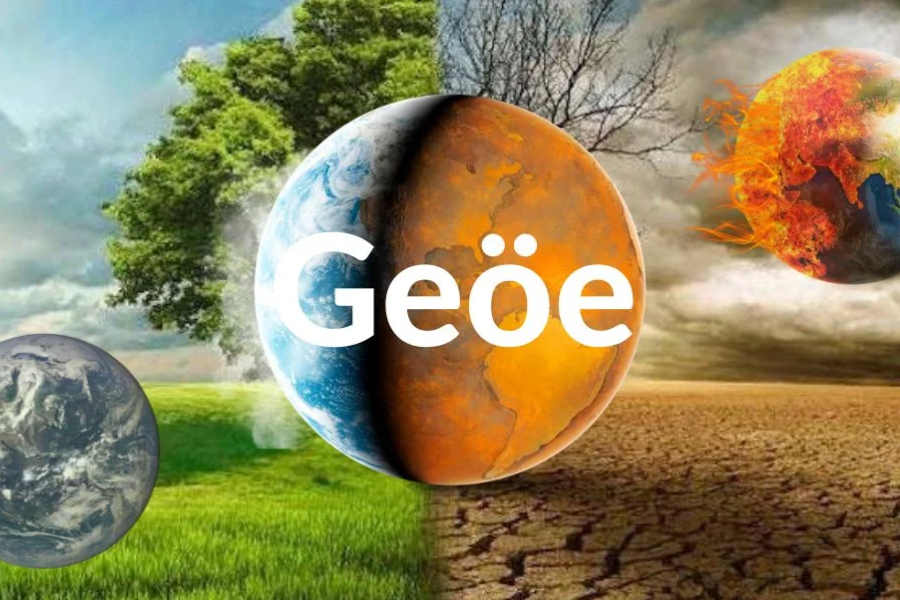Charting New Frontiers With Geöe: The Next Generation Of Geospatial Solutions
Introduction: The Dawn Of Geospatial Innovation
In today’s data-driven world, geospatial technology has become an essential tool for comprehending and interacting with our environment. Geöe is at the forefront of this field, presenting innovative advancements that enhance how spatial data is captured, analyzed, and utilized. As a state-of-the-art platform, Geöe introduces groundbreaking features designed to push the boundaries of geospatial applications, providing users with unprecedented levels of detail and functionality.
Geöe’s integration of advanced algorithms and real-time data processing promises to revolutionize various industries, from urban planning and environmental management to logistics and disaster response. By offering enhanced data visualization, predictive analytics, and seamless integration with other technological systems, Geöe is set to reshape how professionals and organizations leverage geospatial information, making it a game-changer in the realm of spatial technology.
What Is Geöe? A Comprehensive Overview

Geöe is a cutting-edge geospatial technology platform that offers high-precision geographic information and advanced analytics. Unlike conventional systems, Geöe brings together diverse data sources, including satellite imagery and real-time sensor data, into a cohesive framework. This comprehensive integration enables users to achieve more accurate mapping and sophisticated data analysis.
By synthesizing various types of geographic data, Geöe enhances decision-making capabilities across multiple sectors. Its ability to provide detailed spatial insights and real-time updates makes it a powerful tool for applications ranging from urban planning and environmental monitoring to logistics and emergency response.
Key Features Of Geöe
Geöe offers several key features that set it apart in the geospatial technology landscape. High-resolution imagery provides users with detailed satellite and aerial views, facilitating precise mapping and in-depth spatial analysis. This imagery is crucial for applications that require accurate geographic data, from urban planning to environmental monitoring.
In addition to its high-resolution imagery, Geöe excels in integrating real-time data from various sensors and sources. This capability allows for dynamic updates and immediate responses to changing conditions. Coupled with advanced analytics tools for spatial analysis, predictive modeling, and data visualization, Geöe ensures that users can derive actionable insights from complex geospatial data. Its user-friendly interface further simplifies these tasks, making sophisticated geospatial technology accessible and manageable for a wide range of applications.
System Requirements: What You Need To Get Started

To fully leverage Geöe’s capabilities, users need to ensure their systems meet certain requirements. Given the platform’s data-intensive nature, robust hardware and software specifications are necessary.
Minimum Requirements
- CPU: Dual-core processor with 2.5 GHz or higher.
- RAM: 8 GB.
- Storage: 50 GB of free space.
- GPU: Integrated graphics.
Recommended Requirements
- CPU: Quad-core processor with 3.0 GHz or higher.
- RAM: 16 GB or more.
- Storage: SSD with 100 GB of free space.
- GPU: Dedicated graphics card with 4 GB VRAM.
Installation And Setup: Getting Geöe Up And Running

Installing Geöe requires a methodical approach to ensure optimal performance and functionality. Start by downloading the latest version of the software from the official website. Make sure your system meets the necessary hardware requirements and that your operating system is current before proceeding with the installation. Run the installer and follow the on-screen prompts to complete the setup process. After installation, configure the software by adjusting settings according to your specific needs, such as selecting data sources and customizing user preferences.
Post-installation involves several additional steps to fully integrate and personalize Geöe. Begin by connecting to various data sources, such as satellite feeds and real-time sensors, to leverage the platform’s full capabilities. Next, set up user accounts and permissions to manage access and maintain security. Finally, customize the interface and features to align with your workflow, ensuring that Geöe is tailored to support your specific geospatial analysis and decision-making requirements.
Applications And Use Cases: Transforming Industries With Geöe
Geöe’s innovative technology offers a wide range of applications across various sectors. Its ability to integrate and analyze complex geospatial data can drive advancements and efficiencies in numerous fields.
Key Applications
Geöe plays a pivotal role in urban planning by providing detailed geographic data that enhances city development and infrastructure planning. By leveraging high-resolution imagery and advanced analytics, urban planners can visualize spatial relationships, identify potential growth areas, and assess the impact of new developments. This data-driven approach allows for more informed decision-making, ultimately leading to more sustainable and efficient urban environments.
In the realm of environmental monitoring, Geöe is instrumental in tracking changes in natural landscapes and supporting conservation efforts. By integrating real-time data from various sources, including satellite imagery and environmental sensors, stakeholders can monitor ecosystems, assess the health of natural resources, and respond to environmental changes effectively. Furthermore, in sectors like transportation and logistics, Geöe optimizes routes and fleet management through predictive analytics, while in agriculture, it aids in improving crop management and yields predictions through spatial data analysis, demonstrating the platform’s versatility across multiple industries.
Advantages Of Geöe: Why It Stands Out

Geöe offers several benefits that distinguish it from traditional geospatial platforms.
Benefits
Geöe stands out for its precision and accuracy, offering high-resolution data and advanced analytics that ensure reliable and detailed results. By providing detailed satellite imagery and integrating real-time sensor data, Geöe enables users to achieve a high level of accuracy in their geographic analyses. This precision is crucial for applications that depend on reliable data, such as urban planning and environmental monitoring, where small inaccuracies can lead to significant impacts.
Additionally, Geöe’s integration and flexibility allow it to combine various data sources into a cohesive system, enhancing its utility across different sectors. This capability supports enhanced decision-making by providing comprehensive, data-driven insights that inform strategic choices. Whether optimizing logistics routes or managing agricultural resources, Geöe’s ability to synthesize diverse data streams into actionable information empowers users to make well-informed decisions, driving efficiency and effectiveness across industries.
Limitations And Challenges: Areas For Improvement
Despite its strengths, Geöe faces some limitations that users should be aware of.
Challenges
Geöe’s initial setup and configuration can be complex, often requiring technical expertise to ensure that the platform is properly installed and tailored to specific needs. The intricacies involved in integrating various data sources and configuring advanced analytics tools may pose challenges, particularly for users who are not familiar with geospatial technology or systems administration.
Additionally, managing and processing the large volumes of geospatial data that Geöe handles can be resource-intensive, necessitating substantial computing power and storage capacity. This can increase operational costs and require investments in robust hardware. Moreover, the advanced features and capabilities of Geöe may come with a significant price tag, making it a considerable investment for organizations. These factors should be weighed carefully against the platform’s benefits when considering its adoption.
User Experience: What Are Users Saying?

Feedback from early adopters and industry experts provides valuable insights into Geöe’s performance and usability.
User Feedback
- Positive Reviews: Users appreciate the platform’s precision and comprehensive data integration capabilities.
- Challenges: Some users have reported difficulties with the initial setup and data management.
Community And Support: Resources For Geöe Users

Geöe is supported by a robust community and a range of resources designed to assist users.
Support Resources
- Official Documentation: Comprehensive guides and tutorials are available on the Geöe website.
- User Forums: Active forums where users can discuss issues and share solutions.
- Customer Support: Professional support services for troubleshooting and technical assistance.
Future Prospects: The Evolution Of Geöe
As geospatial technology continues to evolve, Geöe is positioned to play a significant role in shaping the future of the industry.
Upcoming Developments
- Enhanced Features: Continuous updates and new features to improve functionality and user experience.
- Expanded Integration: Greater compatibility with emerging technologies and data sources.
- Increased Accessibility: Efforts to make Geöe more accessible and user-friendly for a broader audience.
FAQs About Charting New Frontiers With Geöe
1. What is Geöe?
Geöe is a cutting-edge geospatial technology platform designed to provide high-precision geographic information and advanced analytics. It integrates various data sources, including satellite imagery and real-time sensors, into a unified system, enabling more accurate mapping, sophisticated analysis, and enhanced decision-making capabilities.
2. What are the key features of Geöe?
Geöe offers several notable features, including high-resolution imagery for precise mapping, real-time data integration for dynamic updates, advanced analytics tools for spatial analysis and predictive modeling, and a user-friendly interface that simplifies complex tasks.
3. What are the system requirements for Geöe?
To run Geöe effectively, the minimum system requirements include a dual-core processor with 2.5 GHz, 8 GB of RAM, 50 GB of free storage, and integrated graphics. For optimal performance, a quad-core processor with 3.0 GHz or higher, 16 GB of RAM, 100 GB of SSD storage, and a dedicated graphics card with 4 GB VRAM is recommended.
4. How do I install Geöe?
To install Geöe, download the software from the official website, ensure your system meets the requirements, and run the installer. Follow the on-screen prompts to complete the setup, then configure settings, connect to data sources, and customize the interface according to your needs.
5. What industries can benefit from using Geöe?
Geöe is beneficial across various industries, including urban planning, environmental monitoring, transportation and logistics, and agriculture. It provides detailed geographic data and predictive analytics that enhance decision-making and operational efficiency in these fields.
6. What are the advantages of using Geöe?
The advantages of Geöe include its high precision and accuracy in data analysis, its ability to integrate and synthesize diverse data sources, and its flexibility in providing actionable insights that support informed decision-making across multiple sectors.
7. What challenges should I be aware of when using Geöe?
Challenges with Geöe include its complex setup and configuration, which may require technical expertise, as well as the resource-intensive nature of managing large volumes of geospatial data. Additionally, the platform’s advanced features can be costly, making it a significant investment.
8. How are user support and community engagement for Geöe?
Geöe is supported by a range of resources including official documentation, user forums, and customer support services. These resources help users troubleshoot issues, share solutions, and maximize their use of the platform.
9. What are the prospects for Geöe?
Geöe’s prospects include continuous updates to enhance features and functionality, expanded integration with emerging technologies, and efforts to increase accessibility and user-friendliness for a broader audience.
Conclusion
Geöe represents a significant advancement in geospatial technology, offering unparalleled precision, integration, and analytical capabilities. Its ability to combine high-resolution imagery with real-time data and advanced analytics positions it as a transformative tool across various industries.
While Geöe does present some challenges, such as its complex setup and resource requirements, its benefits in terms of enhanced decision-making and operational efficiency make it a compelling choice for organizations seeking to leverage geospatial data effectively. As the platform continues to evolve, it is set to play a crucial role in shaping the future of geospatial solutions, driving innovation, and improving outcomes across multiple sectors.
Stay in touch for more updates and alerts visit: England Tribune!






